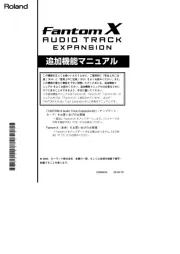Roland MC-101 Bedienungsanleitung
Roland
Nicht kategorisiert
MC-101
Lies die bedienungsanleitung für Roland MC-101 (21 Seiten) kostenlos online; sie gehört zur Kategorie Nicht kategorisiert. Dieses Handbuch wurde von 2 Personen als hilfreich bewertet und erhielt im Schnitt 5.0 Sterne aus 1.5 Bewertungen. Hast du eine Frage zu Roland MC-101 oder möchtest du andere Nutzer dieses Produkts befragen? Stelle eine Frage
Seite 1/21

11
Functions Added in Ver.1.80
Undo/Redo Function Added
This function lets you revert a phrase to how it was just before it was
edited.
* The messages “Can’t UNDO” or “Can’t REDO” are shown when undo/
redo can’t be performed.
Undoing the previous operation
(UNDO)
1.
Press the [EXIT] and MEASURE [<] buttons at the same time.
“UNDO” is shown in the display, and the sequencer returns to the
previous state.
For a step recording, this undoes the step that you just inputted or
erased.
For a real-time recording, this undoes the recorded step and motion
state.
* When you switch between tracks or clips, the undo content is erased.
* You can’t undo or redo while recording in real time.
* You can undo up to 10 times.
Reverting an Undo Operation
(REDO)
1.
Press the [EXIT] and MEASURE [>] buttons at the same time.
“REDO” is shown in the display, and the data reverts to how it was
before you did the undo operation.
Tone Partial Editor Function Added
A simple partial editing function for tones has been added.
1.
Hold down the [SHIFT] button and press the [SOUND]
button.
2.
Select PARTIAL to display the EDIT screen.
* While holding down the [SHIFT] button, press the [SOUND], [FILTER],
[MOD] or [FX] button to turn the partial on/o that you want to edit.
3.
Use the [C1]–[C4] knobs to edit the values.
* You can edit the parameters by holding down the [SOUND], [FILTER],
[MOD] and [FX] buttons and turning the [VALUE] knob.
COM
(COMMON)
Here you can make settings related to voicing.
Parameter Value Explanation
OCT
(OCTAVE)
-3–+3
Species the pitch of the tone in octave
units (maximum of ±3 octaves).
M/P
(MONO/POLY)
MONO, POLY
Species whether the tone plays
polyphonically (POLY) or monophonically
(MONO).
MONO: Only the note of the last-played key
is played, one note at a time.
POLY: Multiple notes can be played
simultaneously.
PRT
(PORTAMENTO SW)
OFF, ON
Species whether the portamento (*1)
eect is applied (ON) or not applied (OFF).
TIM
(PORTAMENTO TIME)
0–1023
Species the time over which the pitch
changes when using portamento. Higher
settings will cause the pitch change to the
next note to take more time.
ANL
(ANALOG FEEL)
0–127
Applies time-varying change to the pitch
and volume of the tone that is producing
sound, adding a sense of variability. As you
increase this value toward the maximum,
the variability becomes greater, producing
instability.
Parameter Value Explanation
CRS
(COARSE TUNE)
-48–+48sem
Adjusts the pitch of the tone’s sound up or
down in semitone steps (+/-4 octaves).
*1 Portamento is an eect which smoothly changes the pitch
from the rst-played key to the next-played key. By applying
portamento when the MONO/POLY parameter is “MONO”, you
can simulate slide performance techniques on a violin or similar
instrument.
OSC 1–4
Here you can make settings for the oscillators of each partial.
Parameter Value Explanation
OSC
(OSC TYPE)
PCM, VA, PCM-
Sync, SuperSAW,
Noise
Species the oscillator type.
PCM: Sound is produced by PCM. This
sounds the wave specied by WAVE GROUP
TYPE, WAVE BANK, and WAVE NUMBER.
VA: Sound is produced by an
analogmodeled wave generated by
calculation. This sounds the wave of the
number specied by WAVE FORM.
PCM-Sync: Sound is produced by the wave
specied by the SYNC WAV.
SuperSAW: Sound is produced by
SuperSAW.
Noise: White noise is produced.
GRP
(WAVE GROUP TYPE)
INT, SAMP
INT: When OSC TYPE is PCM, the internal
waveforms of the MC-101 are used.
SAMP: When OSC TYPE is PCM, the
waveforms loaded into the project are used.
BNK
(WAVE BANK)
A, B, C
When OSC TYPE is “PCM” and the WAVE
GROUP TYPE is “INT”, this sets the banks (A–
C) to sound.
WAV
(PCM: WAVE NUMBER)
When OSC TYPE is “PCM”, this species the waveform number
in the group specied by WAVE GROUP TYPE and in the bank
specied by WAVE BANK.
Species the sample number when WAVE GROUP TYPE is SAMP.
WAV
(VA: WAVE FORM)
SAW, SQR, TRI, SIN,
RAMP, JUNO, TRI2,
TRI3, SIN2
Species the wave that is sounded when
OSC TYPE is VA.
SAW: Sawtooth wave
SQR: Square wave
TRI: Triangle wave
SIN: Sine wave
RAMP: Ramp wave
JUNO: Modulated sawtooth wave
TRI2: Triangle wave variation
TRI3: Triangle wave variation
SIN2: Sine wave variation
PW
(PULSE WIDTH)
0–127
This is an eect obtained by varying the
pulse width duty cycle to modify the
waveform.
It is available when OSC TYPE is VA, and also
allows you to create eects with other than
SQR (square wave).
PWM
(PWM DEPTH)
-63–+63
Species the amount (depth) of LFO applied
to PULSE WIDTH.
LFO follows the settings of LFO2.
SW
(PARTIAL SWITCH)
OFF, ON Turns the partial on/o.
CRS
(COARSE TUNE)
-48–+48
Species the pitch in semitone units
(maximum ±4 octaves).
FIN
(FINE TUNE)
-50cen–+50cen
Species the pitch in one-cent units
(maximum ±50 cents).
LEV
(LEVEL)
0–127 Species the volume of the partial.
© 2020 Roland Corporation
09
MC-101 Update

MC-101 Update – Functions Added in Ver.1.80
22
OSC
(PCM-SYNC)
Parameter Value Explanation
WAV
(PCM-Sync: SYNC WAV)
Species the wave that is used when OSC TYPE is PCM-Sync.
OSC
(SuperSAW)
Parameter Value Explanation
DET
(SuperSAW: DETUNE)
0–127
Species the width of pitch variance
between the seven sawtooth waves that are
layered within one oscillator.
Higher values produce greater pitch
variance. (When doing this, OSC Detune
changes the pitch for each of the seven
sawtooth waves by the same width.)
OSC MOD 1-2/3-4
(Structure)
Structure lets you play two partials as a pair.
By using partial 1 or 3 (the carrier) to modulate the other partial 2 or
4 (the modulator), you can create a wide range of tonal characters.
Parameter Value Explanation
STR
(STRUCTURE)
Partial 2 or 4 is used to modulate the sound of partial 1 or 3.
OFF O
SYNC
This implements the oscillator sync function
that is provided by analog synthesizers.
The oscillator of partial 1 or 3 is reset at
pitch cycles of partial 2 or 4.
* This is only enabled when the OSC TYPE of
OSC1 or OSC3 is “VA” or “PCM-Sync”.
RING
This implements the ring modulator that is
provided by analog synthesizers.
The output of partial 2 or 4 is multiplied
with partial 1 or 3.
XMOD
XMOD2
This implements the cross modulation
function that is provided by analog
synthesizers.
The output of partial 2 or 4 is applied as the
pitch of partial 1 or 3.
LV1/3
(OSC1/3 LEVEL)
0–127 Adjusts the volume of OSC 1 or 3.
LV2/4
(OSC2/4 LEVEL)
0–127 Adjusts the volume of OSC 2 or 4.
RNG
(RING LEVEL)
0–127 Adjusts the volume of ring modulation.
MOD
(MOD DEPTH)
0–10800 [cent]
(XMOD)
0–127
(XMOD2)
Adjusts the depth of cross modulation.
FILTER
Here you can make lter settings.
Parameter Value Explanation
TYP
(TVF: FILTER TYPE)
OFF, LPF, BPF, HPF,
PKG, LPF2, LPF3
Selects the type of TVF lter when FILTER
TYPE is TVF.
OFF: O
LPF: Low pass lter
BPF: Band pass lter
HPF: High pass lter
PKG: Peaking lter
LPF2: Low pass lter 2
LPF3: Low pass lter 3
TYP
(VCF: FILTER TYPE)
FLAT, TYPE-JP,
TYPE-M, TYPE-P
Selects the type of VCF lter when FILTER
TYPE is VCF.
Each of these simulates the operation of an
analog synthesizer’s LPF.
CUT
(CUTOFF) 0–1023
Selects the frequency at which the lter
begins to have an eect on the waveform’s
frequency components.
Parameter Value Explanation
RES
(RESONANCE) 0–1023
Boosts the region of the sound near the
cuto frequency, adding a distinctive
character to the sound.
ENV
(ENV DEPTH) -63–+63 Species the depth of the lter envelope.
TVF/VCF
(FILTER TYPE)
TVF, VCF
Select either TVF or VCF as the lter type.
* TVF stands for Time Variant Filter, and is a lter
that allows detailed settings to be made for the
time-varying change in the sound’s frequency
components.
If VCF is selected, the simultaneous
polyphony will be less than when TVF is
selected.
KF
(KEY FOLLOW)
-200–+200
Set this if you want the cuto frequency to
change according to the keyboard position
of the note you play.
SLP
(FILTER SLOPE)
-12, -18, -24 [dB/
Oct]
This button selects the slope (steepness) of
the lter.
For VCF, you can choose -12, -18, or -24.
For TVF, you can choose only -12 or -24.
If the lter TYPE is TVF, the following
limitations apply.
Only -12 dB or -24 dB can be specied.
Even if you specify -18 dB, the sound engine
operates internally with the -12 dB setting.
If you specify -24 dB, the simultaneous
polyphony will be less than when -12 dB is
selected.
HPF
(HPF CUTOFF)
0–1023
Species the cuto frequency of the -6 dB
high-pass lter.
* This parameter is eective when FILTER TYPE is
VC F.
ENV FILTER
Here you can make lter envelope settings.
Parameter Value Explanation
T1A
(T1 ATTACK)
0–1023
Species the time over which the initial
value changes to the maximum value after
the key is pressed.
T3D
(T3 DECAY)
0–1023
Species the time over which the SUSTAIN
value is reached following the ATTACK.
L3S
(L3 SUSTAIN)
0–1023
Species the sustain value of the lter
envelope.
T4R
(T4 RELEASE)
0–1023
Species the time over which the minimum
value is reached after the key is released.
ENV AMP
Here you can make amp envelope settings.
Parameter Value Explanation
T1A
(T1 ATTACK)
0–1023
Species the time over which the initial
value changes to the maximum value after
the key is pressed.
T3D
(T3 DECAY)
0–1023
Species the time over which the SUSTAIN
value is reached following the ATTACK.
L3S
(L3 SUSTAIN)
0–1023
Species the sustain value of the amp
envelope.
T4R
(T4 RELEASE)
0–1023
Species the time over which the minimum
value is reached after the key is released.
ENV PITCH
Here you can make pitch envelope settings.
Parameter Value Explanation
DEP
(DEPTH)
-100–+100
Species the depth of the pitch envelope.
Higher values make the pitch envelope
produce greater change. Negative “-” values
invert the shape of the envelope.
If the OSC TYPE is other than VA, this is
limited to ±63.
Produktspezifikationen
| Marke: | Roland |
| Kategorie: | Nicht kategorisiert |
| Modell: | MC-101 |
| Display-Typ: | LCD |
| USB Anschluss: | Ja |
| Breite: | 224 mm |
| Tiefe: | 132 mm |
| Gewicht: | 716 g |
| Produktfarbe: | Schwarz |
| Höhe: | 61 mm |
| Equalizer: | Ja |
| Eingebautes Display: | Ja |
| Schnellstartübersicht: | Ja |
| Display-Hintergrundbeleuchtung: | Ja |
| Stromstärke: | 0.5 A |
| USB-Stecker: | USB Typ-B |
| Netzteiltyp: | DC/Batterie |
| Anzahl der USB-Anschlüsse: | 1 |
| Kompatible Speicherkarten: | SD, SDHC |
| Integriertes optisches Laufwerk: | Nein |
| Integrierter Kartenleser: | Ja |
| Apple-Docking: | Nein |
| MIDI-Out: | Ja |
| MIDI-In: | Ja |
Brauchst du Hilfe?
Wenn Sie Hilfe mit Roland MC-101 benötigen, stellen Sie unten eine Frage und andere Benutzer werden Ihnen antworten
Bedienungsanleitung Nicht kategorisiert Roland

20 August 2025
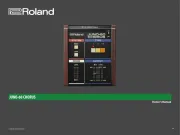
20 August 2025
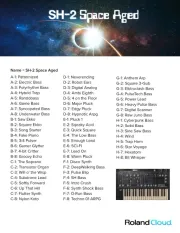
20 August 2025
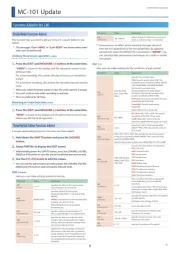
20 August 2025
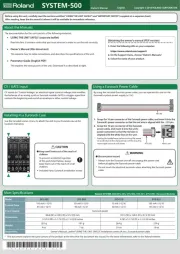
20 August 2025
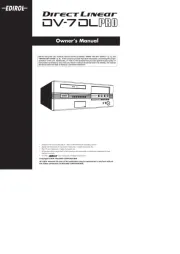
20 August 2025
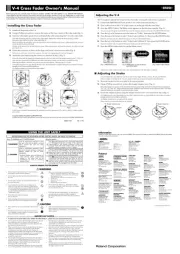
20 August 2025
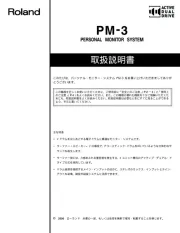
3 August 2025
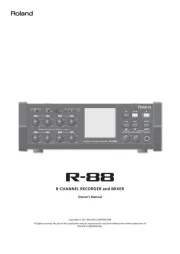
3 August 2025
Bedienungsanleitung Nicht kategorisiert
- AXESS
- Enduro
- F40C4TMP
- Kaiser
- Antari
- Sinbo
- Horizont
- Solac
- DAB
- Intermatic
- Brevi
- Ciarra
- Vistron
- Chefman
- Tuur
Neueste Bedienungsanleitung für -Kategorien-
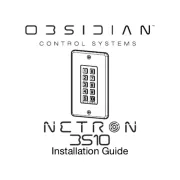
20 August 2025

20 August 2025

20 August 2025
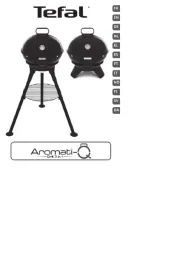
20 August 2025
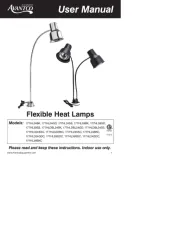
20 August 2025
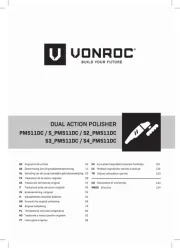
20 August 2025

20 August 2025
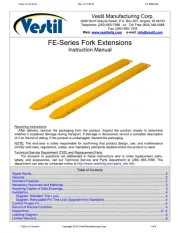
20 August 2025

20 August 2025
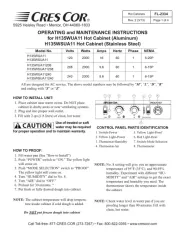
20 August 2025
